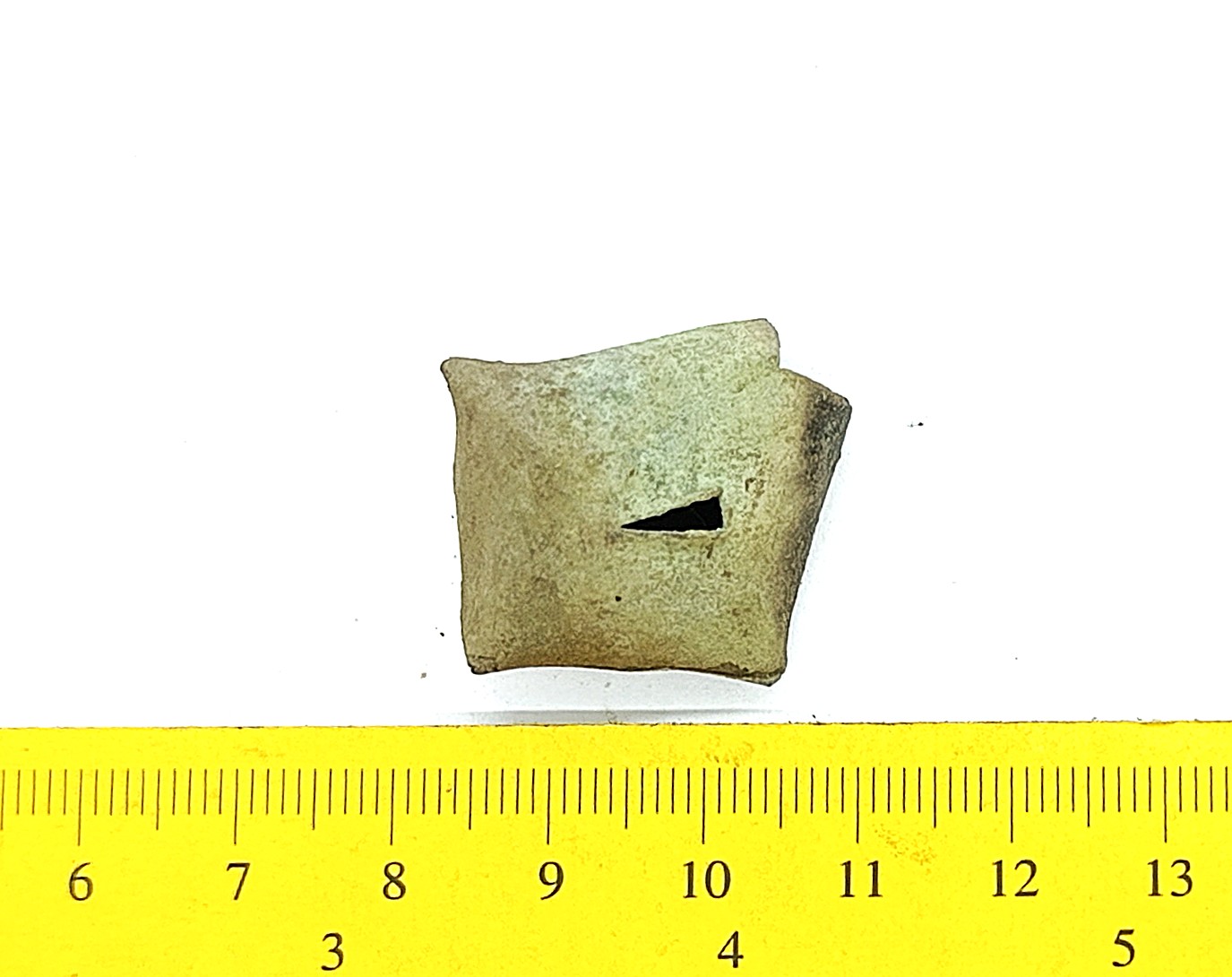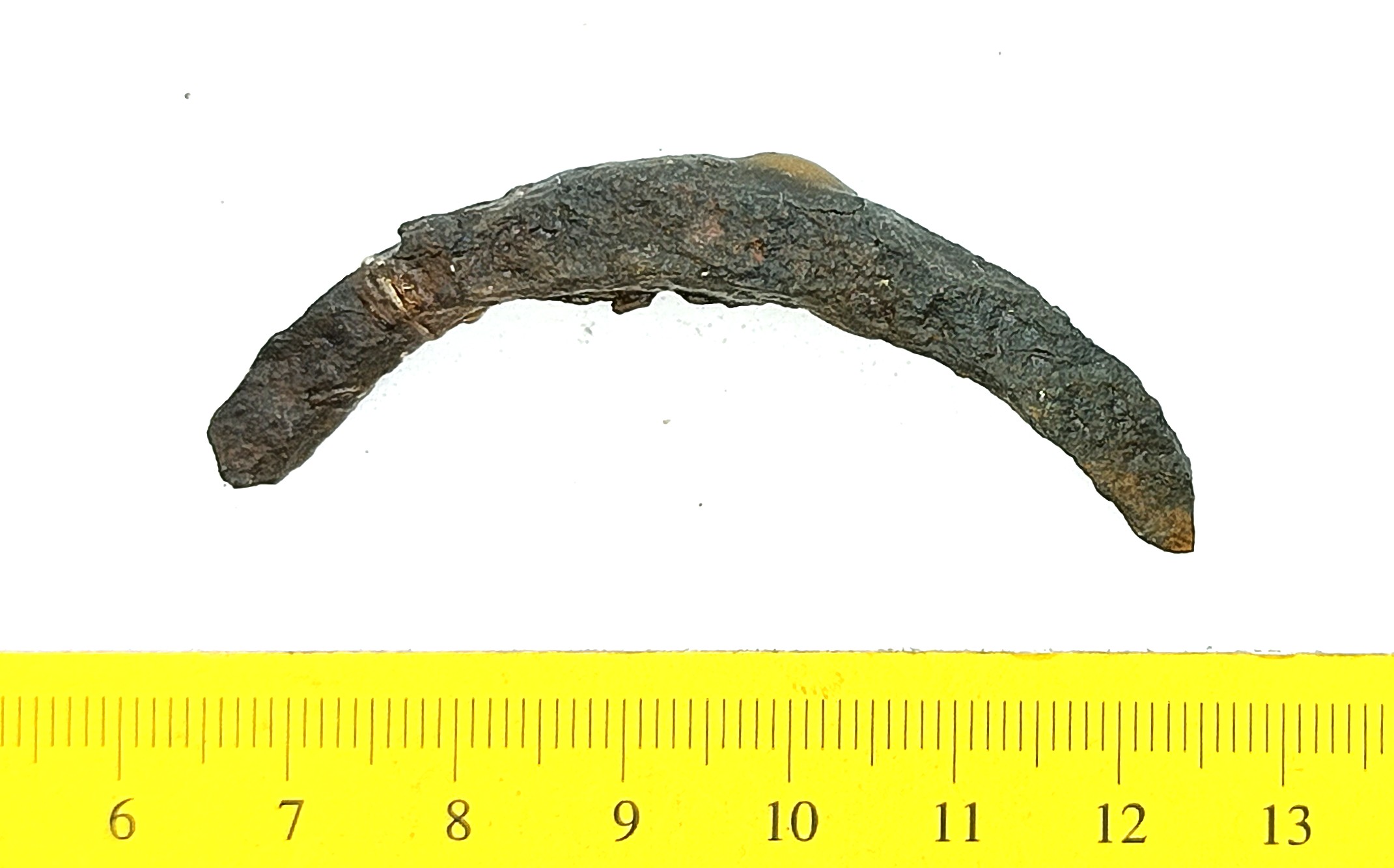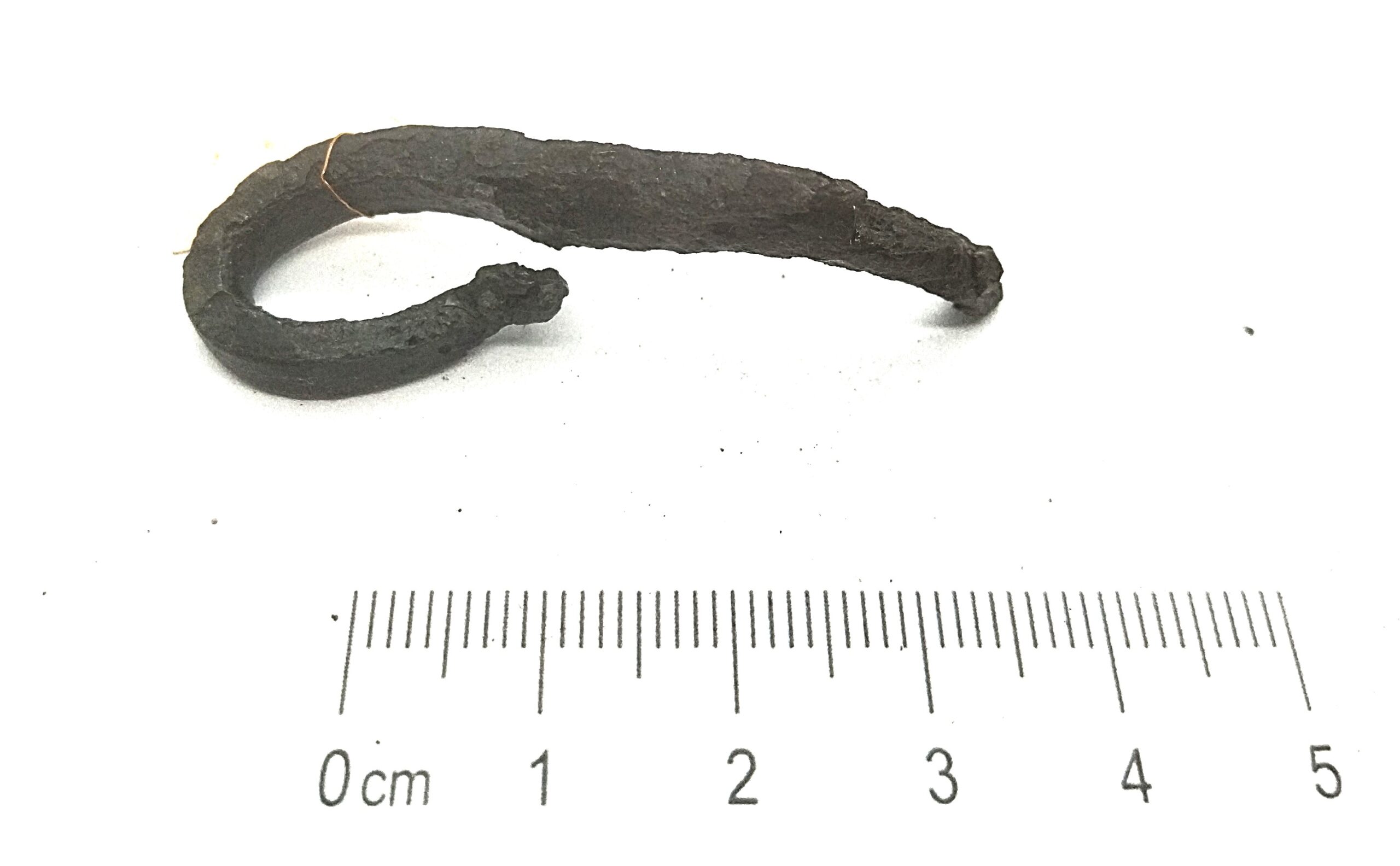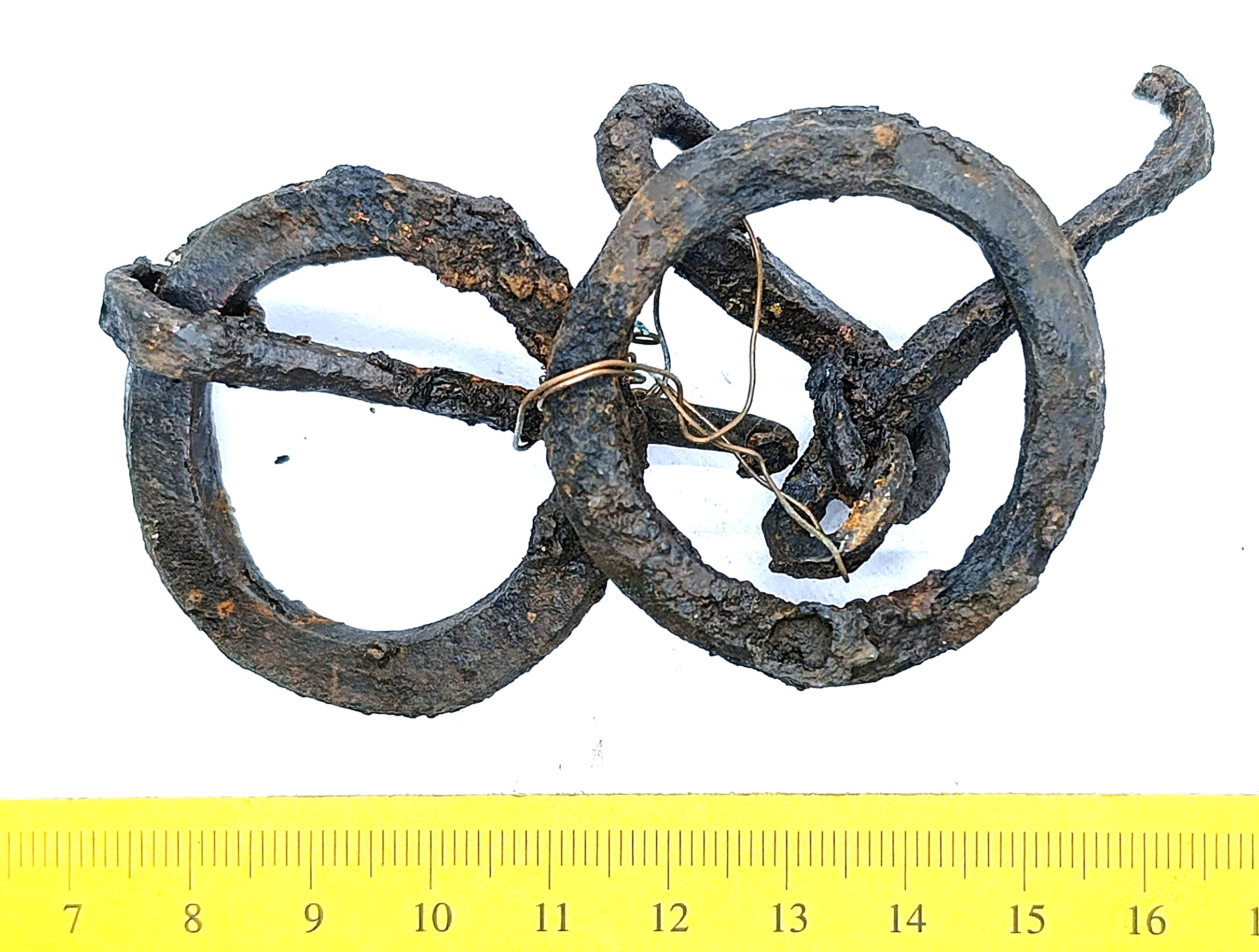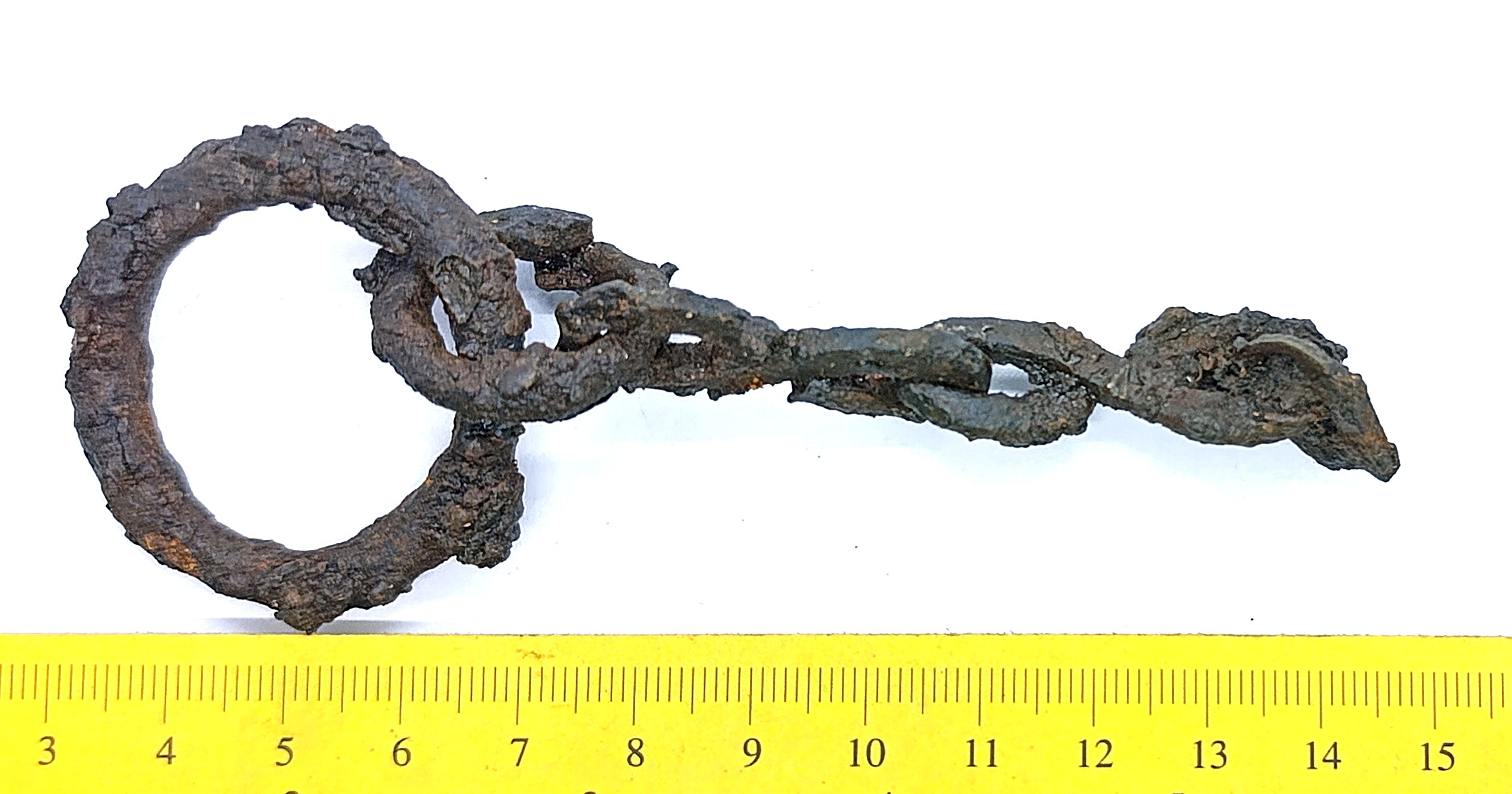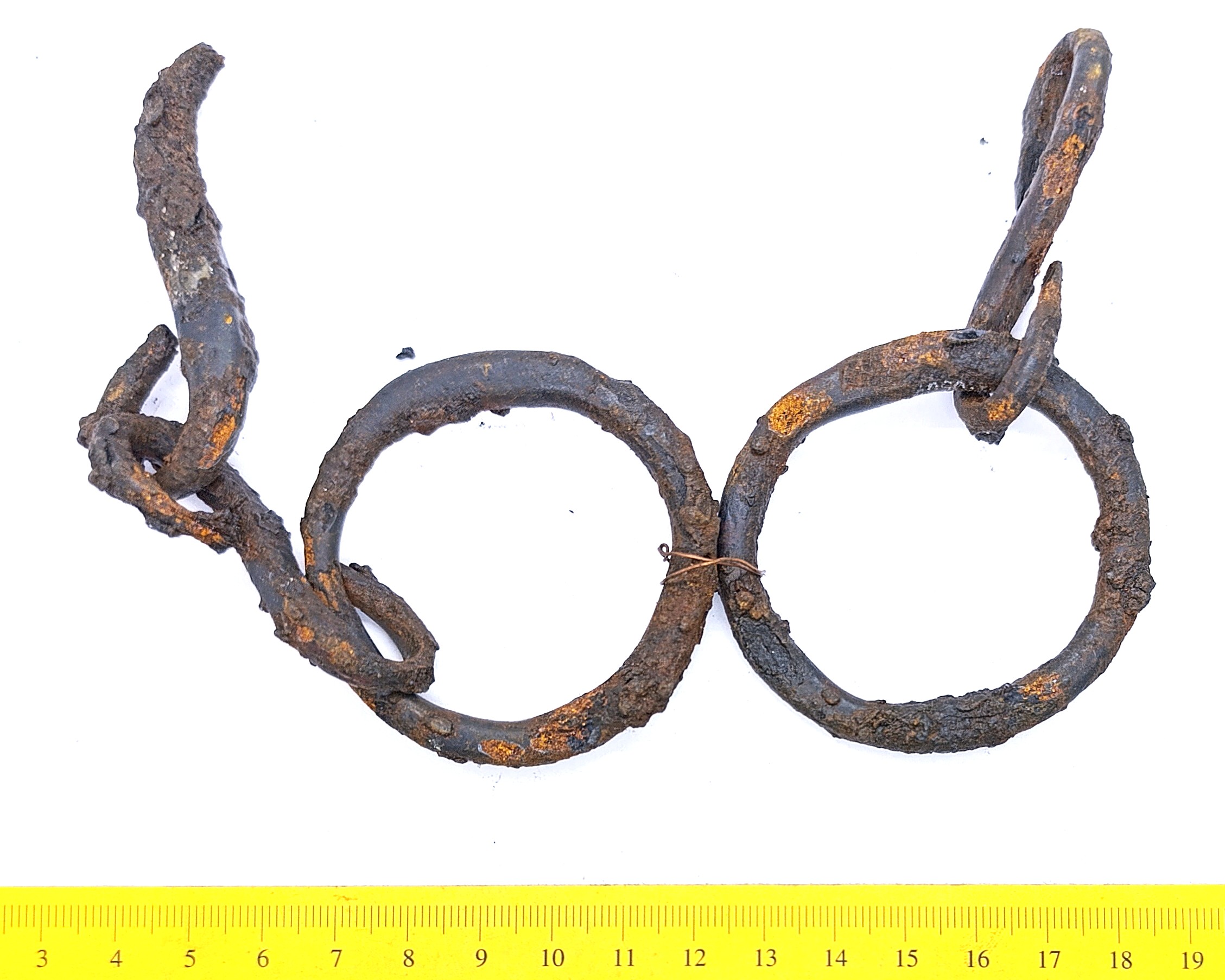Database
Our database is free to use for all history and archaeology enthusiasts. If you use our database, please do not forget to cite correctly:
Mägi, Marika; Palm, Piia Sandra. Archaeological Artefacts of Saaremaa. Foundation Osiliana / Tallinn University. Accessed: date.
The Osiliana Archaeological Database presents artefacts from Saaremaa and the surrounding small islands.
The database contains mainly Iron Age and Medieval finds that can be classified.
Undated metal or other pieces were generally excluded from the database.
Ceramics are represented by isolated examples.
The database is a work in progress and is constantly being updated.
Bridle bells, iron. These iron bells were attached to bridles. In Estonia they have been found from stone graves with cremation burials, where they can also date to the early 13th century.
Mägi, M. 2002. At the Crossroads of Space and Time. Graves, Changing Society and Ideology on Saaremaa (Ösel), 9th–13th Centuries AD. (CCC Papers, 6.) Tallinn.
Horse bits, iron. In the late prehistoric period, horse bits with two and three links were widely used in Estonia. Because they are difficult to date more precisely, they are usually dated between the 11th and 13th centuries. (Mandel 2017, 75).
Mandel, M. 2017. Maidla muinaskalmistu saladused. Eesti Ajaloomuuseum, Tallinn.
Horse bits, iron. In the late prehistoric period, horse bits with two and three links were widely used in Estonia. Because they are difficult to date more precisely, they are usually dated between the 11th and 13th centuries. (Mandel 2017, 75).
Mandel, M. 2017. Maidla muinaskalmistu saladused. Eesti Ajaloomuuseum, Tallinn.
Horse bits, iron. In the late prehistoric period, horse bits with two and three links were widely used in Estonia. Because they are difficult to date more precisely, they are usually dated between the 11th and 13th centuries. (Mandel 2017, 75).
Mandel, M. 2017. Maidla muinaskalmistu saladused. Eesti Ajaloomuuseum, Tallinn.
Horse bits, iron. In the late prehistoric period, horse bits with two and three links were widely used in Estonia. Because they are difficult to date more precisely, they are usually dated between the 11th and 13th centuries. (Mandel 2017, 75).
Mandel, M. 2017. Maidla muinaskalmistu saladused. Eesti Ajaloomuuseum, Tallinn.
Horse bits, iron. In the late prehistoric period, horse bits with two and three links were widely used in Estonia. Because they are difficult to date more precisely, they are usually dated between the 11th and 13th centuries. (Mandel 2017, 75).
Mandel, M. 2017. Maidla muinaskalmistu saladused. Eesti Ajaloomuuseum, Tallinn.
Horse bits, iron. In the late prehistoric period, horse bits with two and three links were widely used in Estonia. Because they are difficult to date more precisely, they are usually dated between the 11th and 13th centuries. (Mandel 2017, 75).
Mandel, M. 2017. Maidla muinaskalmistu saladused. Eesti Ajaloomuuseum, Tallinn.
Horse bits, iron. In the late prehistoric period, horse bits with two and three links were widely used in Estonia. Because they are difficult to date more precisely, they are usually dated between the 11th and 13th centuries. (Mandel 2017, 75).
Mandel, M. 2017. Maidla muinaskalmistu saladused. Eesti Ajaloomuuseum, Tallinn.
Horse bits, iron. In the late prehistoric period, horse bits with two and three links were widely used in Estonia. Because they are difficult to date more precisely, they are usually dated between the 11th and 13th centuries. (Mandel 2017, 75).
Mandel, M. 2017. Maidla muinaskalmistu saladused. Eesti Ajaloomuuseum, Tallinn.
The negative value refers to time Before Christ.

